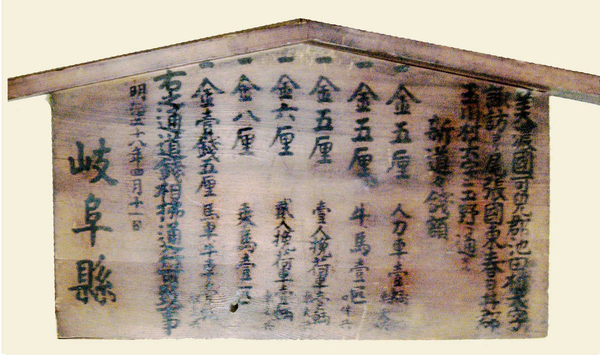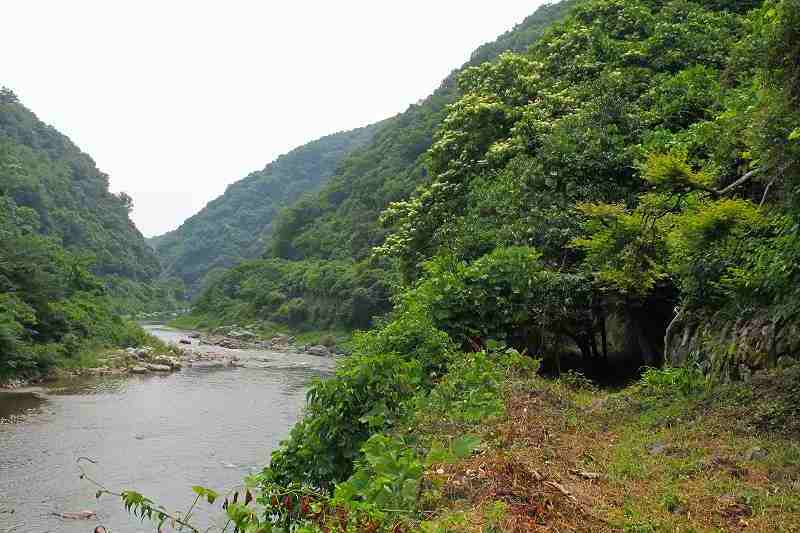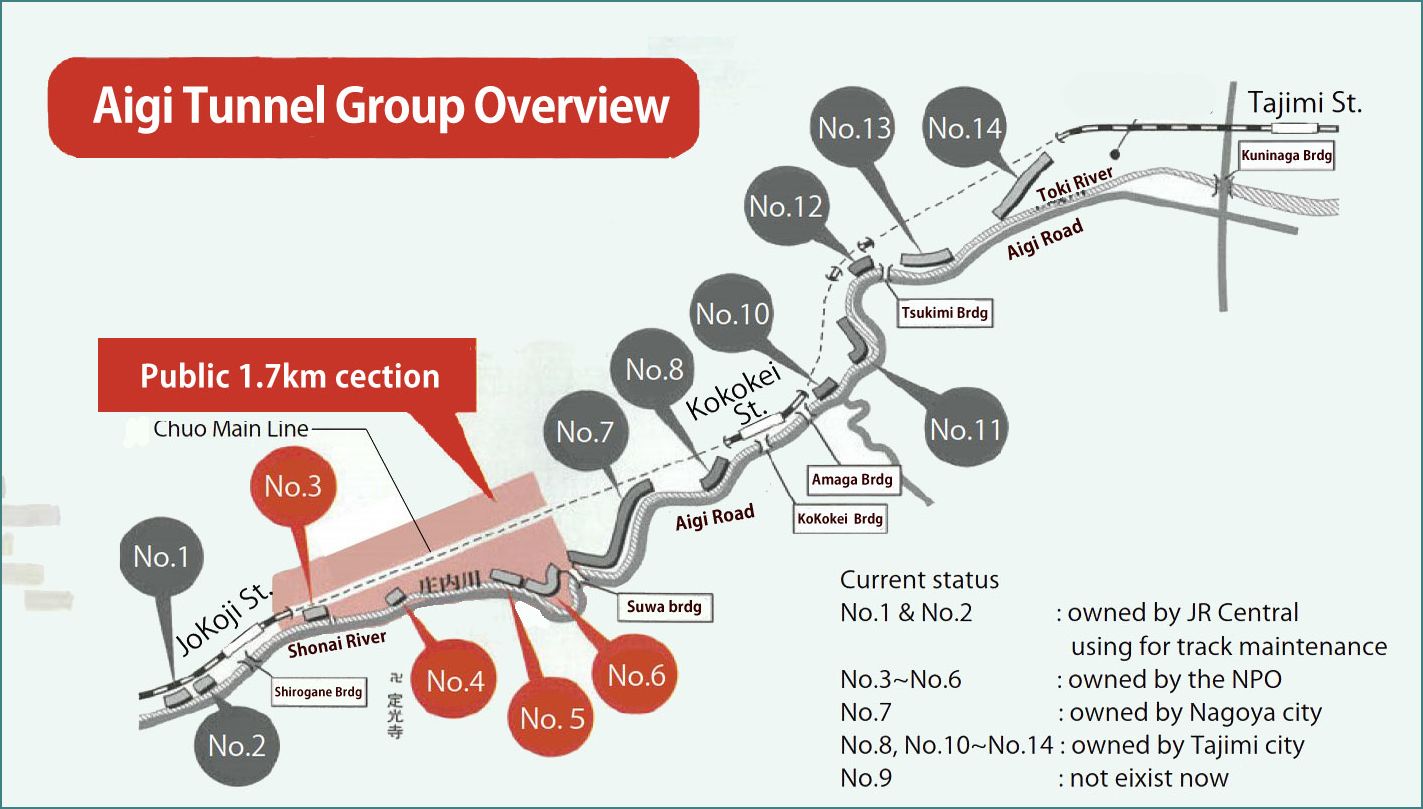WELCOME Aigi Tunnel Group!
・National
Registered Cultural Property ・The 3 Great Abandoned Tunnel Groups
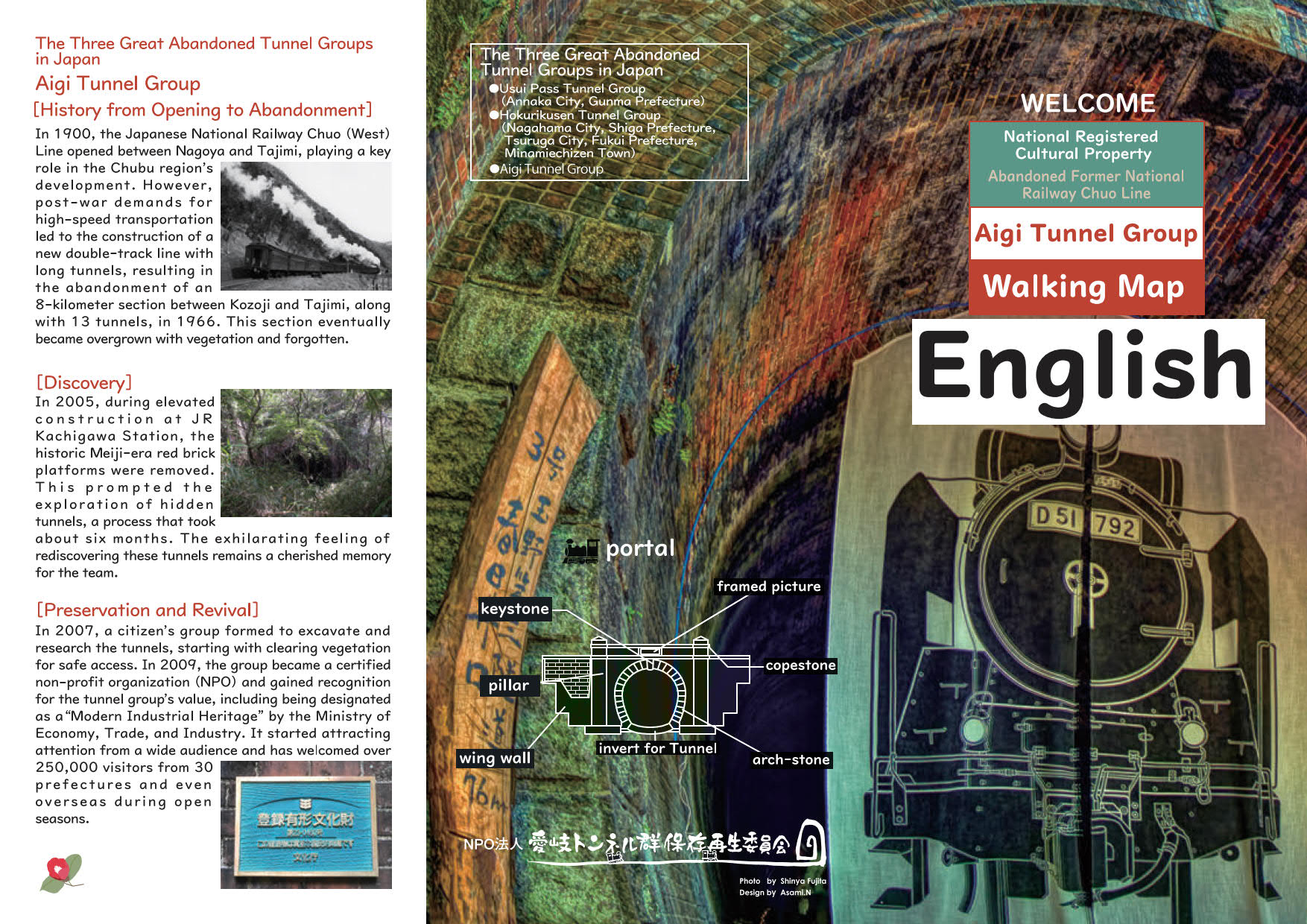
History from Opening to Abandonment
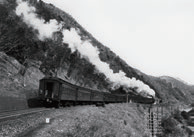 In 1900, the Japanese National Railway Chuo (West) Line opened between Nagoya and Tajimi, playing a key
role in the Chubu region’s development. However, post-war demands for high-speed transportation led to the construction of a new double-track line with long tunnels, resulting in the abandonment of an
8-kilometer section between Kozoji and Tajimi, along with 13 tunnels, in 1966. This section eventually
became overgrown with vegetation and forgotten.
In 1900, the Japanese National Railway Chuo (West) Line opened between Nagoya and Tajimi, playing a key
role in the Chubu region’s development. However, post-war demands for high-speed transportation led to the construction of a new double-track line with long tunnels, resulting in the abandonment of an
8-kilometer section between Kozoji and Tajimi, along with 13 tunnels, in 1966. This section eventually
became overgrown with vegetation and forgotten.
Discovery
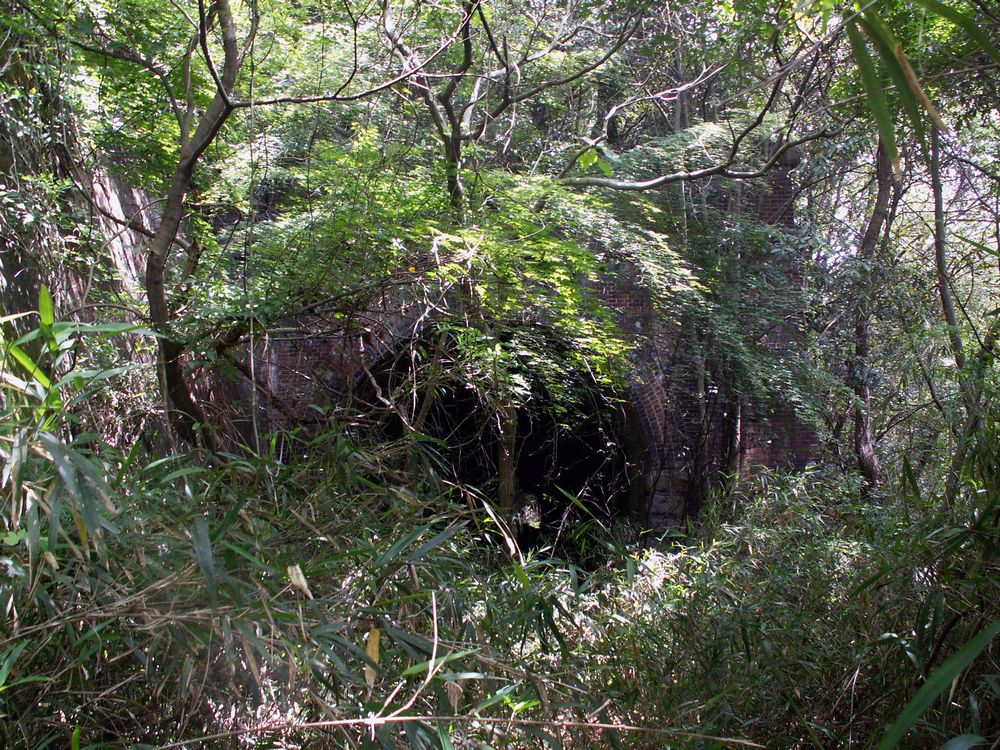 In 2005, during elevated construction at JR Kachigawa Station, the historic Meiji-era red brick platforms were removed.
This prompted the exploration of hidden tunnels, a process that took about six months.
The exhilarating feeling of rediscovering these tunnels remains a cherished memory for the team.
In 2005, during elevated construction at JR Kachigawa Station, the historic Meiji-era red brick platforms were removed.
This prompted the exploration of hidden tunnels, a process that took about six months.
The exhilarating feeling of rediscovering these tunnels remains a cherished memory for the team.
Preservation and Revival
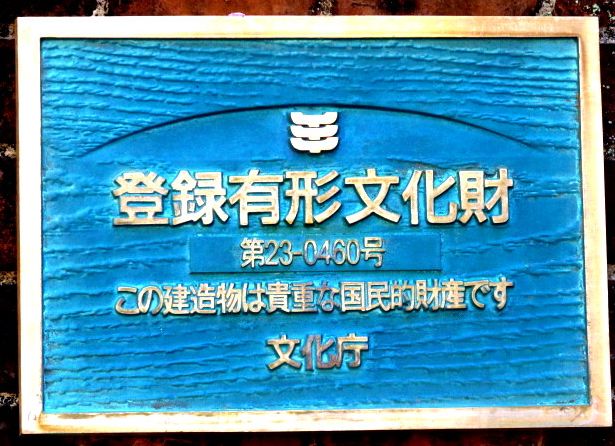 In 2007, a citizen’s group formed to excavate and research the tunnels, starting with clearing vegetation for safe access.
In 2009, the group became a certified non-profit organization (NPO) and gained recognition for the tunnel group’s value,
including being designated as a “Modern Industrial Heritage” by the Ministry of Economy, Trade, and Industry.
It started attracting attention from a wide audience and has welcomed over 250,000 visitors from 30 prefectures and even overseas during open
seasons.
In 2007, a citizen’s group formed to excavate and research the tunnels, starting with clearing vegetation for safe access.
In 2009, the group became a certified non-profit organization (NPO) and gained recognition for the tunnel group’s value,
including being designated as a “Modern Industrial Heritage” by the Ministry of Economy, Trade, and Industry.
It started attracting attention from a wide audience and has welcomed over 250,000 visitors from 30 prefectures and even overseas during open
seasons.
Aigi Tunnel Group Walking Map
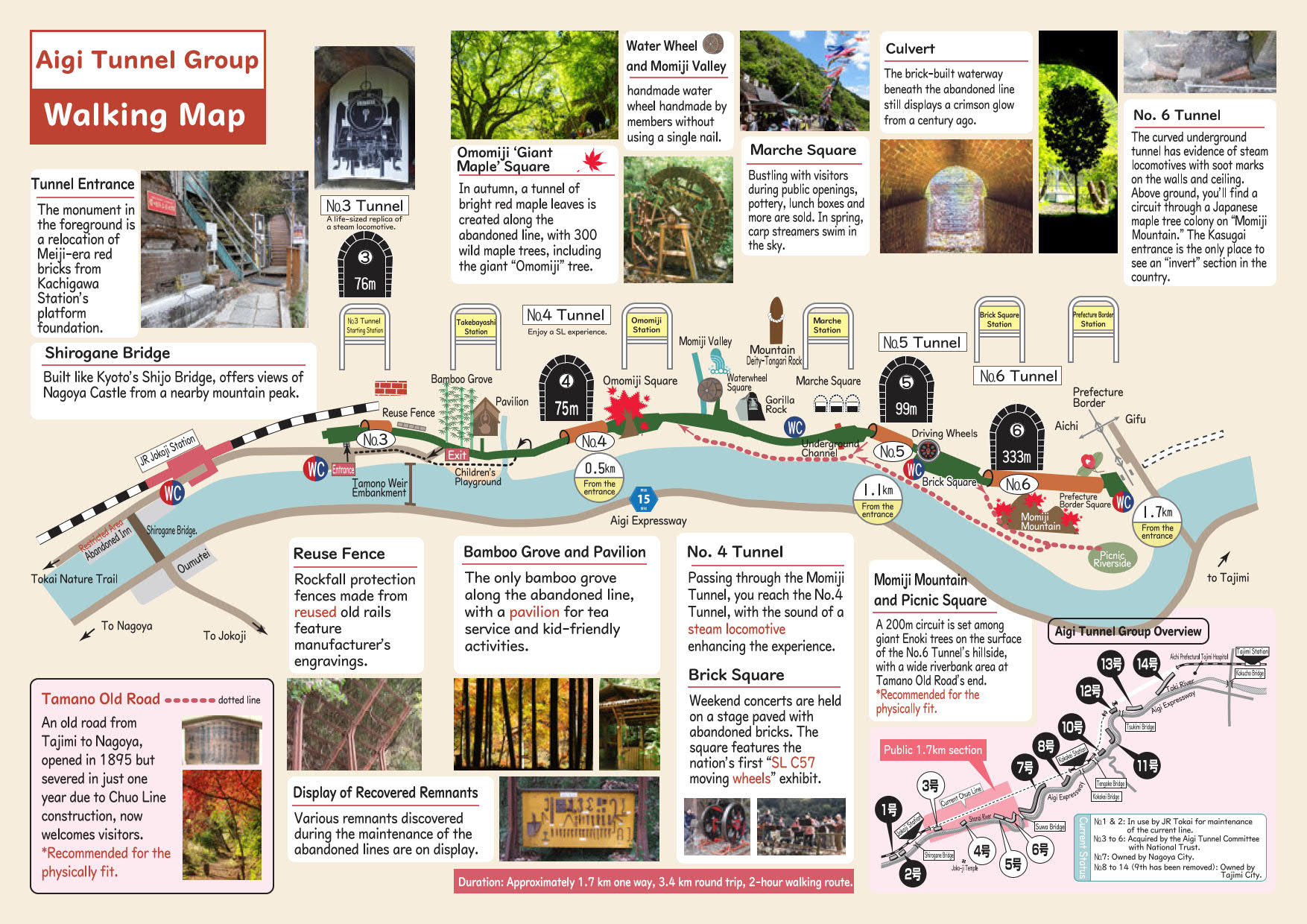
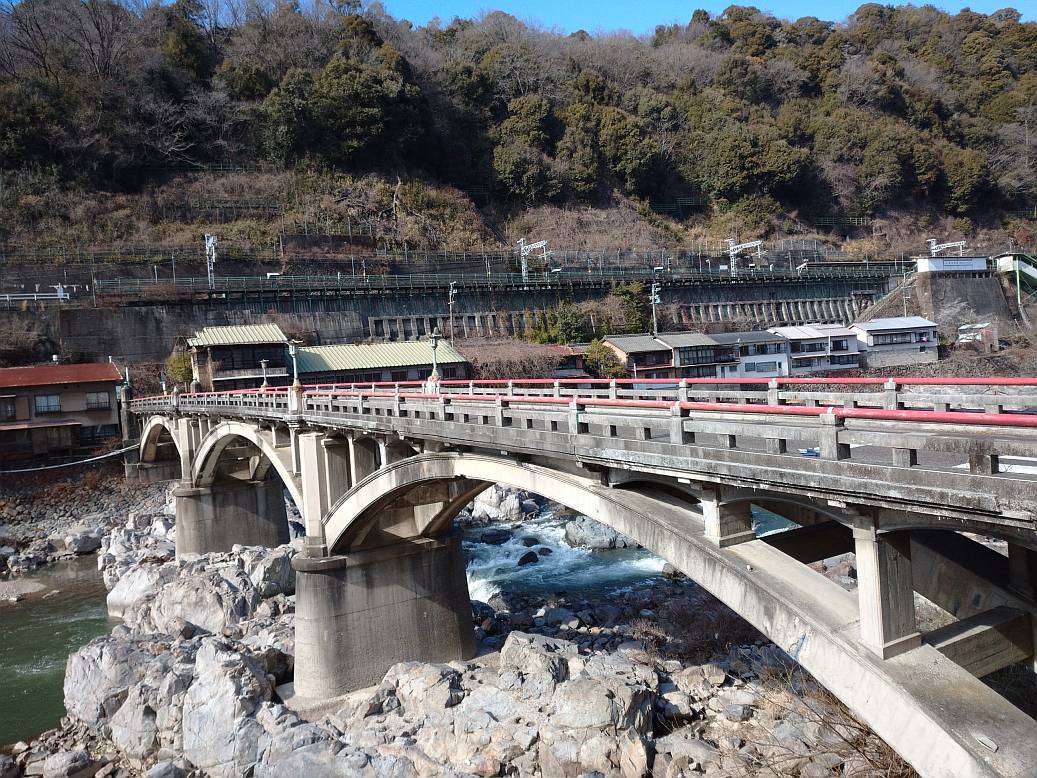
Shirogane Bridge
Built like Kyoto’s Shijo Bridge, offers views of Nagoya Castle from a nearby mountain peak.

Tunnel Entrance
The monument in the foreground is a relocation of Meiji-era red bricks from Kachigawa Station’s platform foundation.
Tamano Old Road
An old road from Tajimi to Nagoya, opened in 1895 but severed in just one year due to Chuo Line construction, now welcomes visitors.
*Recommended for the physically fit.
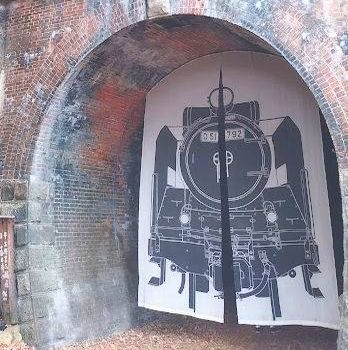
No.3 Tunnel
A life-sized replica of a steam locomotive.
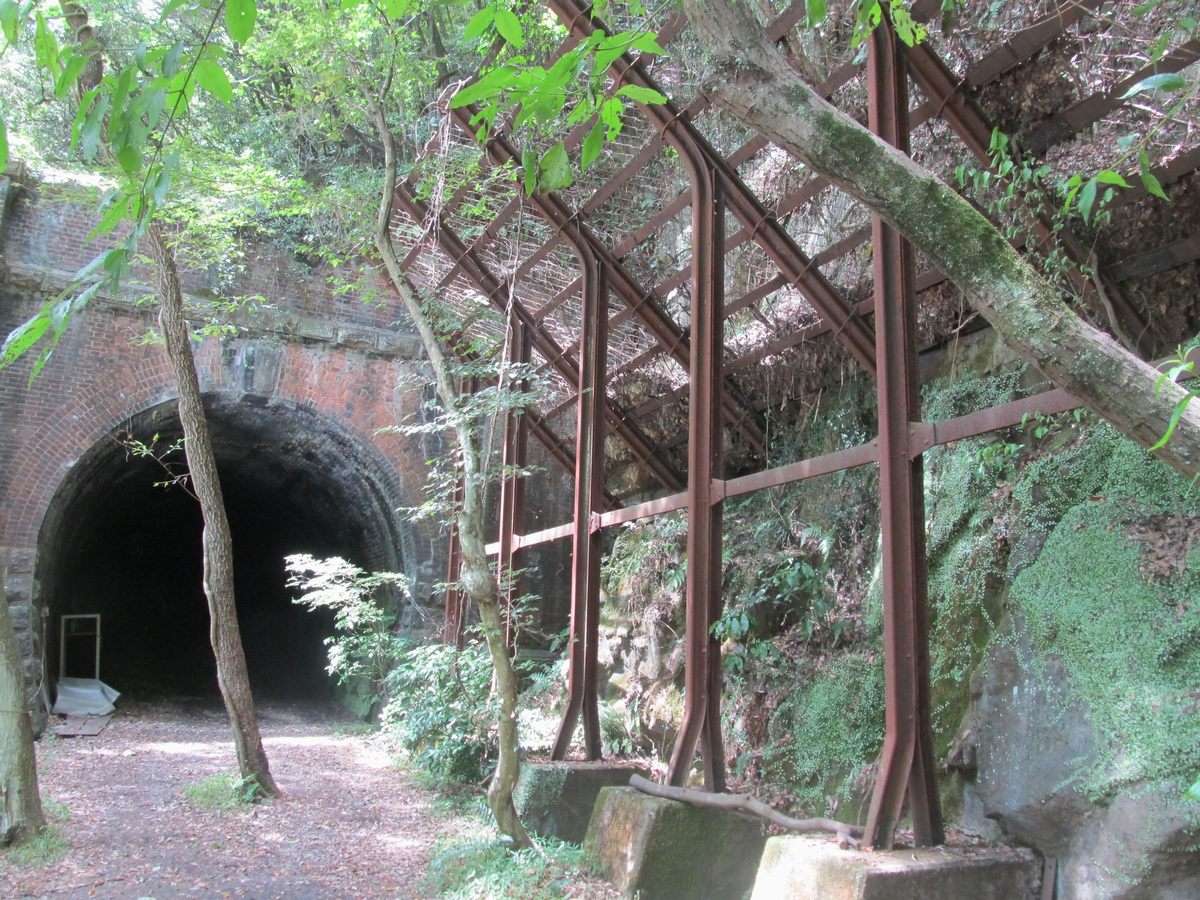
Reuse Fence
Rockfall protection fences made from reused old rails feature manufacturer’s engravings.
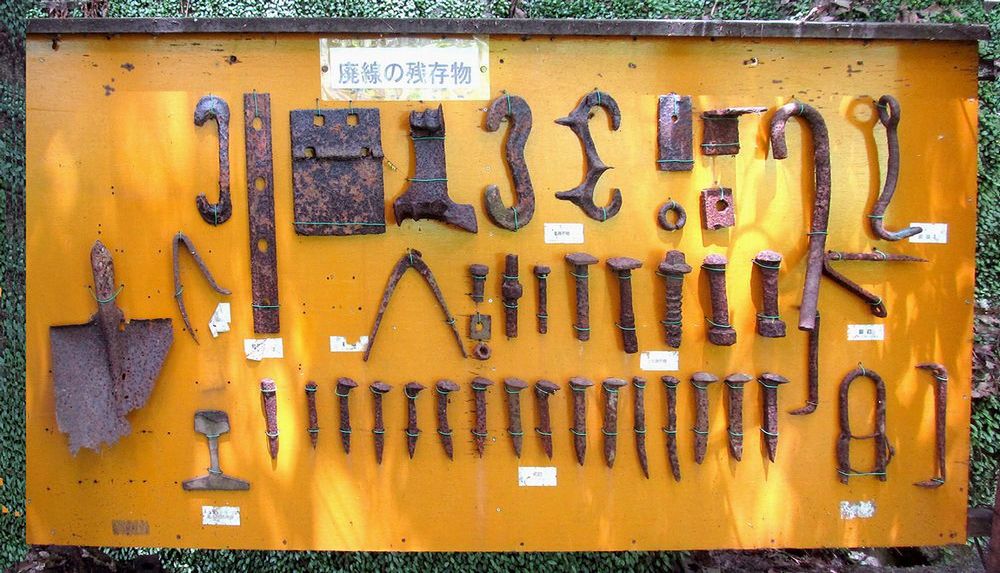
Display of Recovered Remnants
Various remnants descovered during the maintenance of the abandoned lines are on display.
Bamboo Grove and Pavilion
The only bamboo grove along the abandoned line, with a pavilion for tea service and kid-friendly activities.
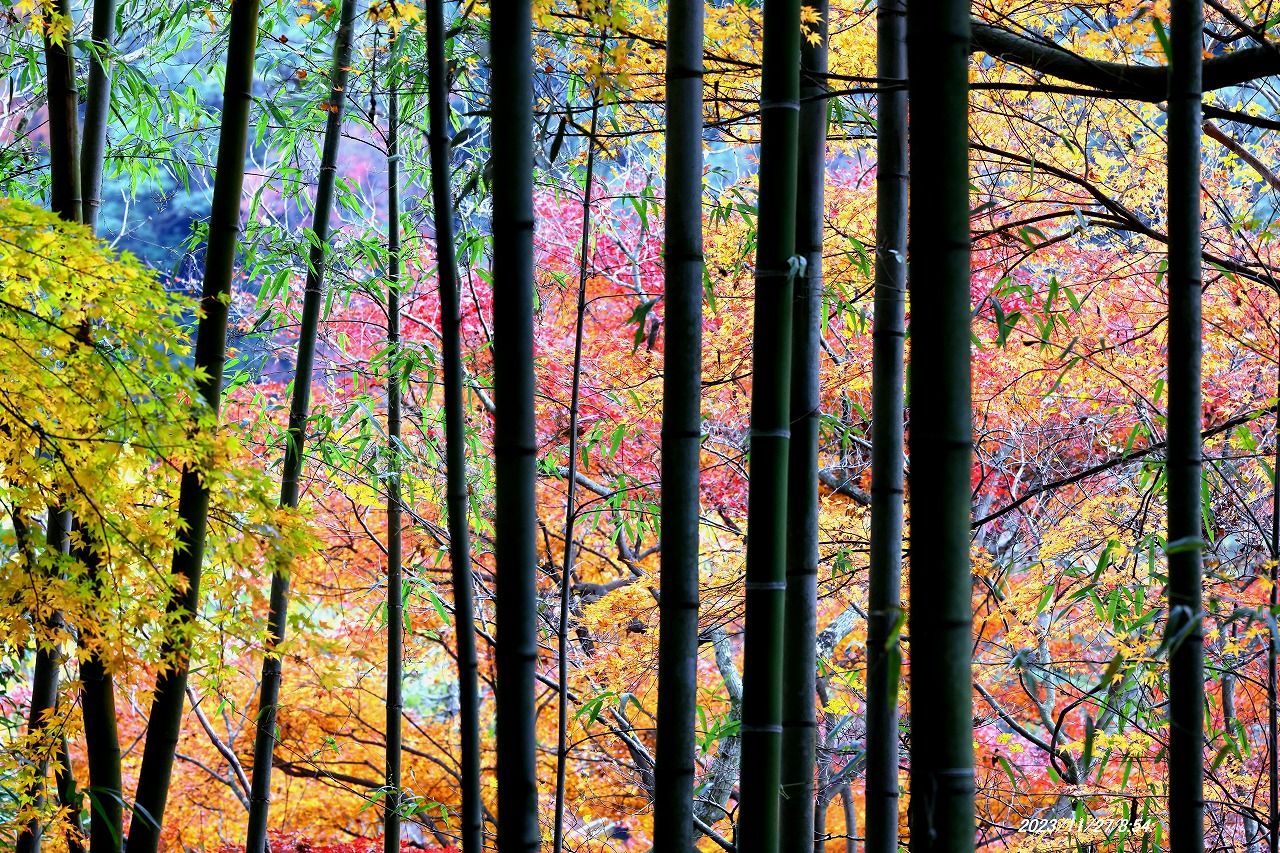
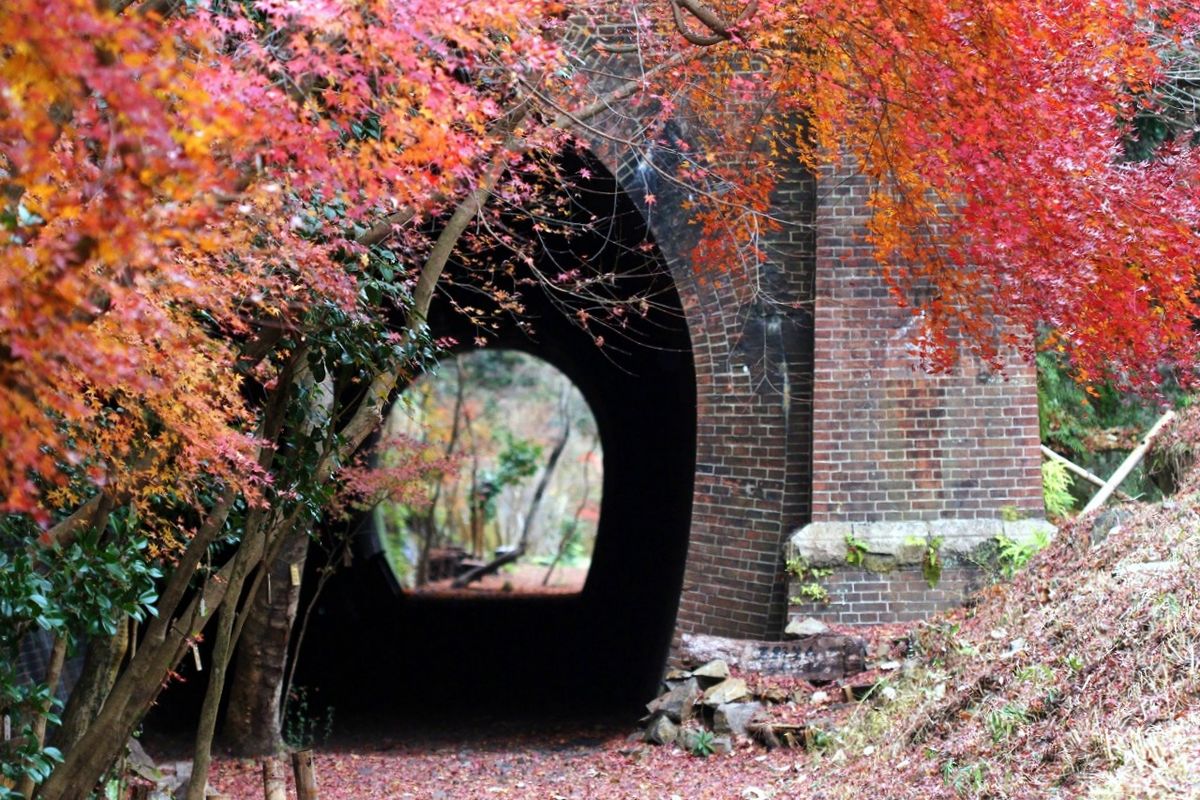
No. 4 Tunnel
Passing through the Momiji Tunnel, you reach the No.4 Tunnel, with the sound of a steam locomotive enhancing the experience.
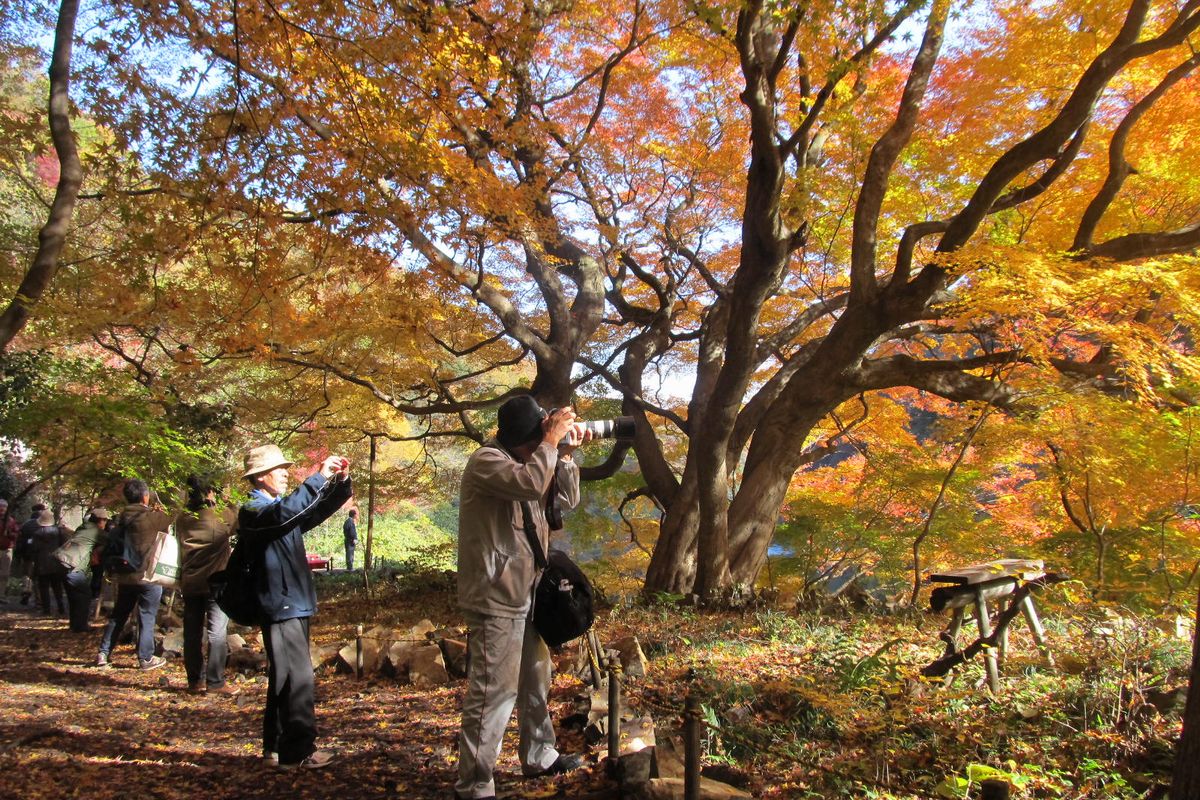
Omomiji ’Giant Maple’ Square
In autumn, a tunnel of bright red maple leaves is created along the abandoned line, with 300 wild maple trees, including the giant “Omomiji” tree.
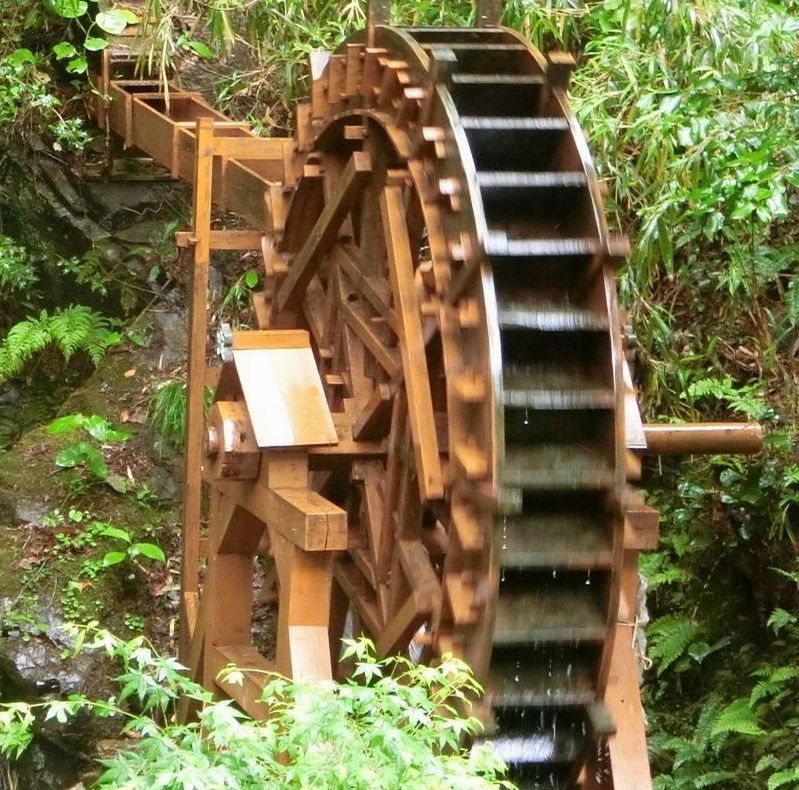
Water Wheel and Momiji Valley
handmade water wheel handmade by members without using a single nail.
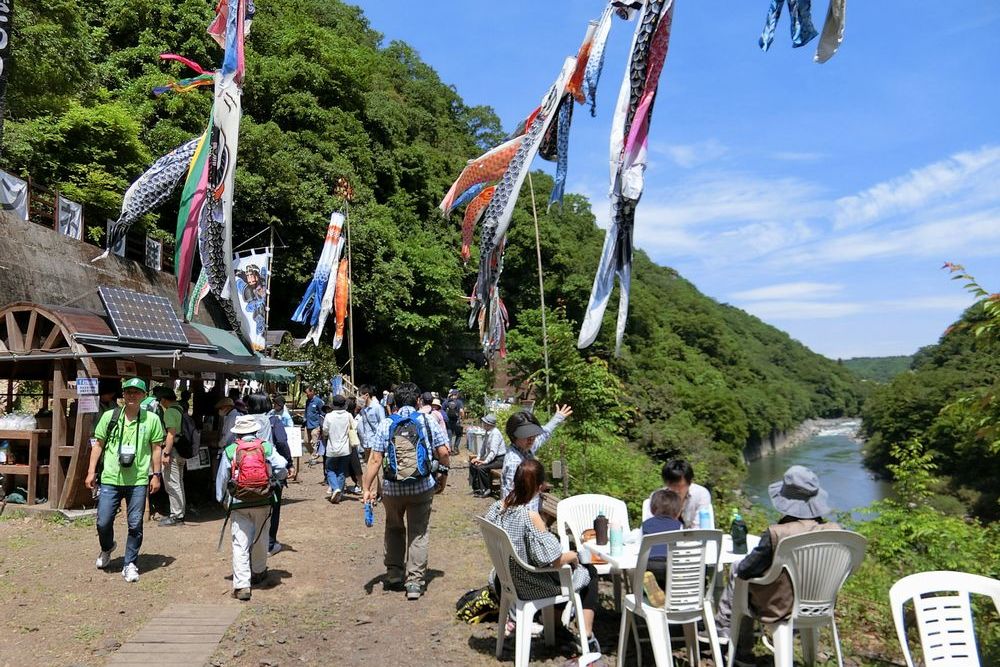
Marche Square
Bustling with visitors during public openings, pottery, lunch boxes and more are sold. In spring, carp streamers swim in the sky.
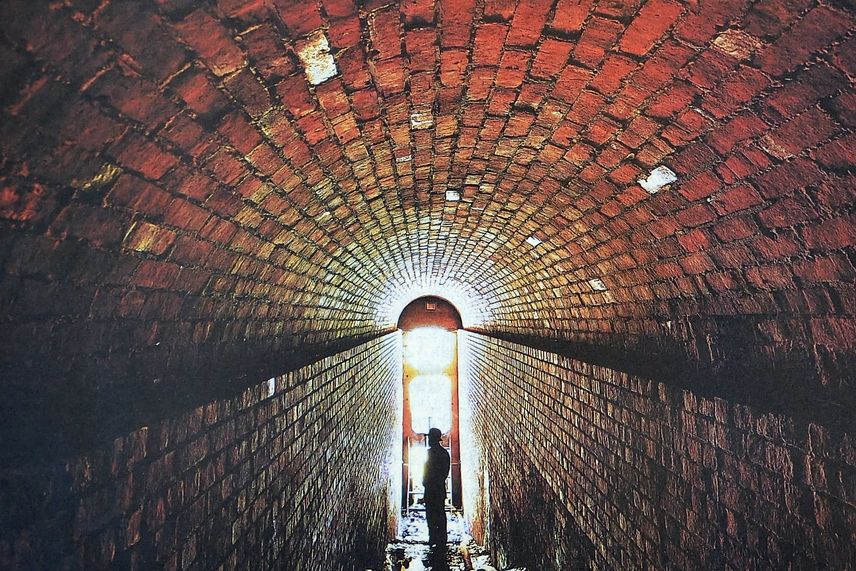
Culvert
The brick-built waterway beneath the abandoned line still displays a crimson glow from a century ago.
Brick Square
Weekend concerts are held on a stage paved with abandoned bricks. The square features the nation’s first “SL C57 moving wheels” exhibit.
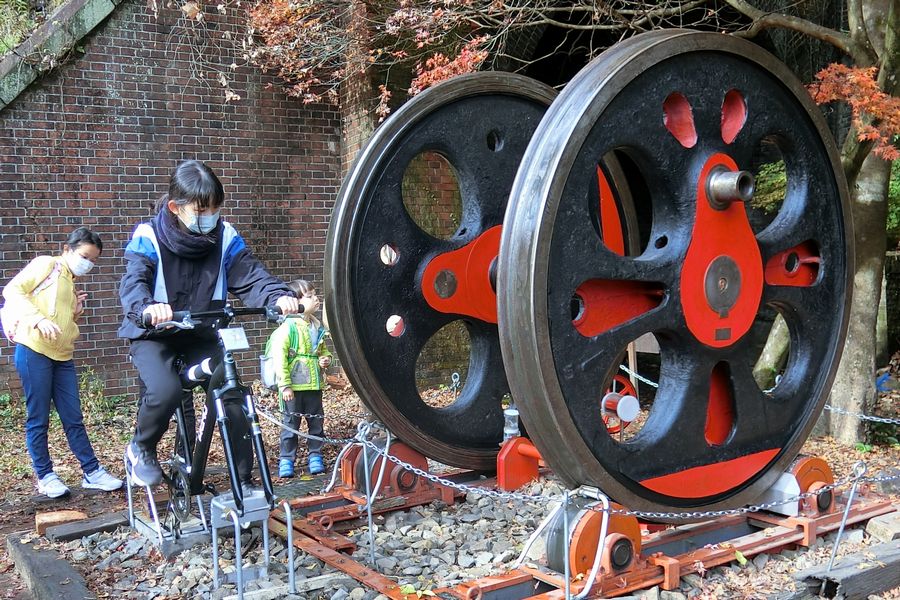
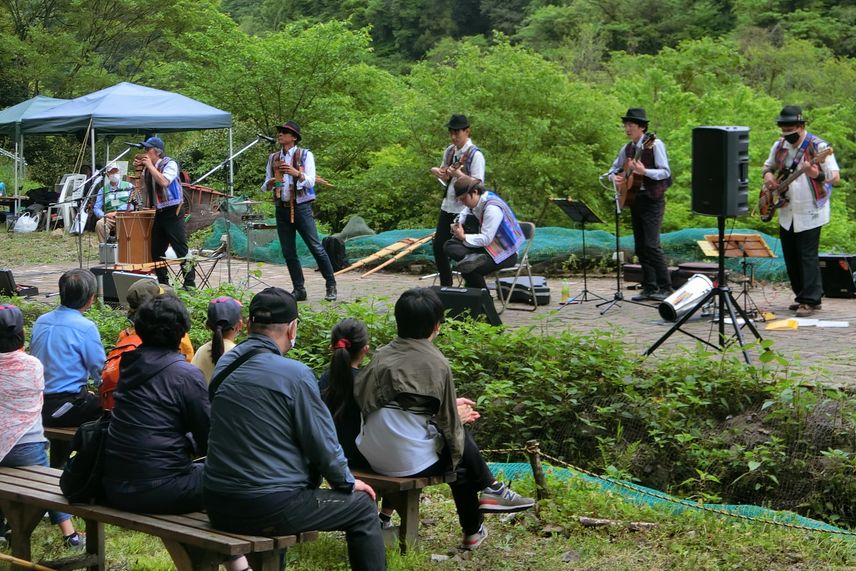
No.6 Tunnel
The curved underground tunnel has evidence of steam locomotives with soot marks on the walls and ceiling.
Above ground, you’ll find a circuit through a Japanese maple tree colony on “Momiji Mountain.”
The Kasugai entrance is the only place to see an “invert” section in the country.

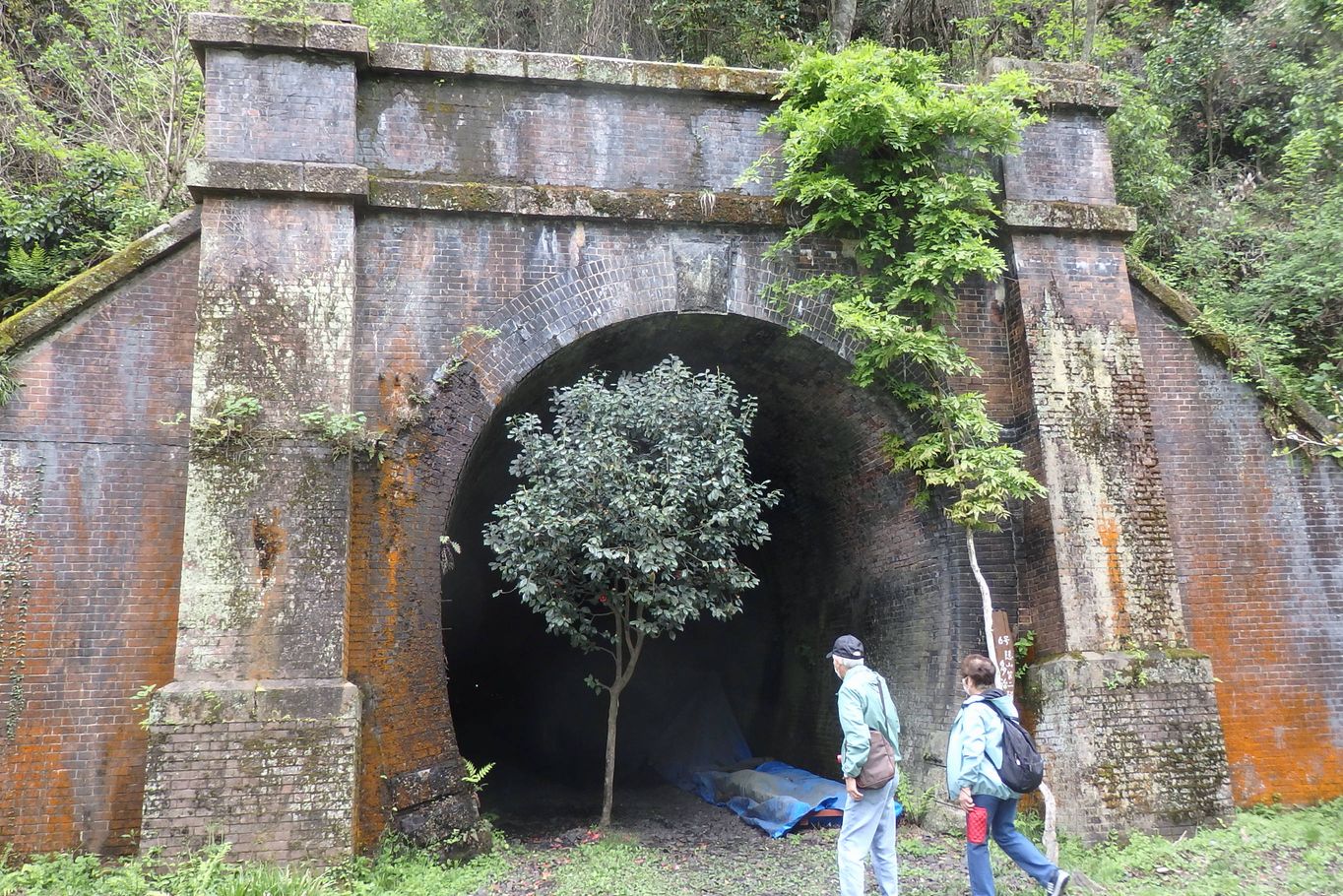
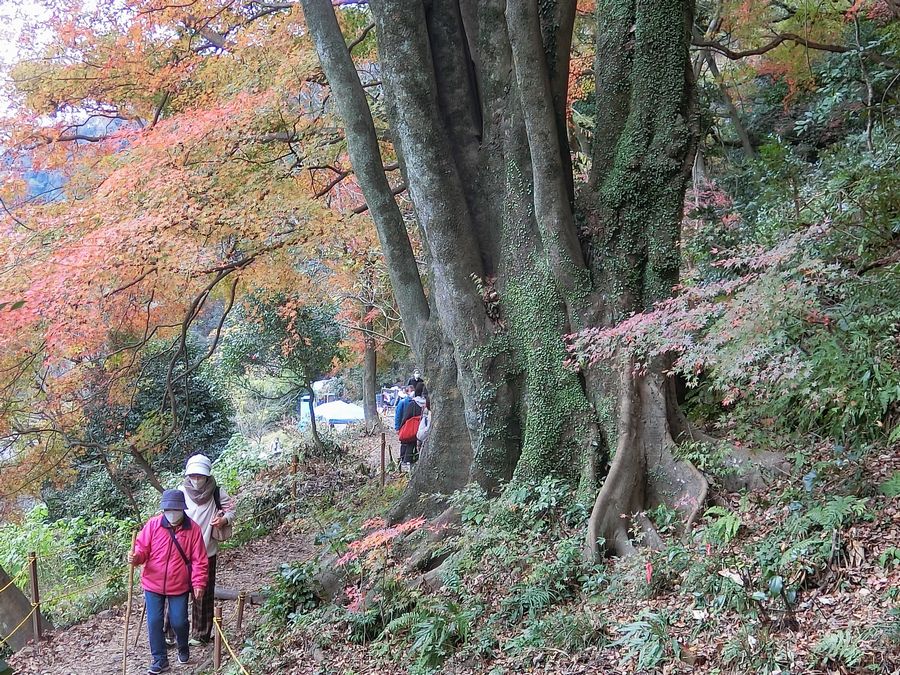
Momiji Mountain and Picnic Square
A 300m circuit is set among giant Enoki trees on the surface of the No.6 Tunnel’s hillside, with a wide riverbank area at Tamano Old Road’s end.
*Recommended for the physically fit.
Aigi Tunnel Group Overview
To learn more about Aigi Tunnel Group
The image is the cover of a book published at the end of last year by "Independent Administrative Institution National Institutes for Cultural Heritage Tokyo National Research Institute for Cultural Properties".
Since 1999, the Institute has published a series of books, each with a specific theme. This "Utilization of Modern Cultural Properties" Independent Administrative Institution National Institutes for Cultural Heritage Tokyo National Research Institute for Cultural Properties Utilization of Modern Cultural Properties" is the 21st in the series.
An article by MURAKAMI Masayoshi, the chairman of the board of directors of the Institute, was published in the book. The title of the article is "Meiji tunnels discovered by coincidentally -Regeneration and a blueprint for the future created by citizen".
The article describes in great detail the historical background of the construction of the railroad in this area, the motivation for starting activities, the current status and attractiveness of the tunnels, and future plans for the area.
Read this and you too can become a "connoisseur" of the Aigi Tunnel group.
Click on the cover image to view and read the PDF file.
Access

During normal times, the tunnels are locked and off-limits.
Tunnels can be visited only when they are open to the public in spring and fall.

There is no parking at the Aigi Tunnels. Please use the train (JR Chuo Line).
Access Map
・Get off at Jokoji Station on the JR Chuo Line. The Tunnel's entrance gate is 300m upstream along a small path below the station.
・From Jokoji Station onward, only pedestrians are allowed. Cars are not allowed to enter.






